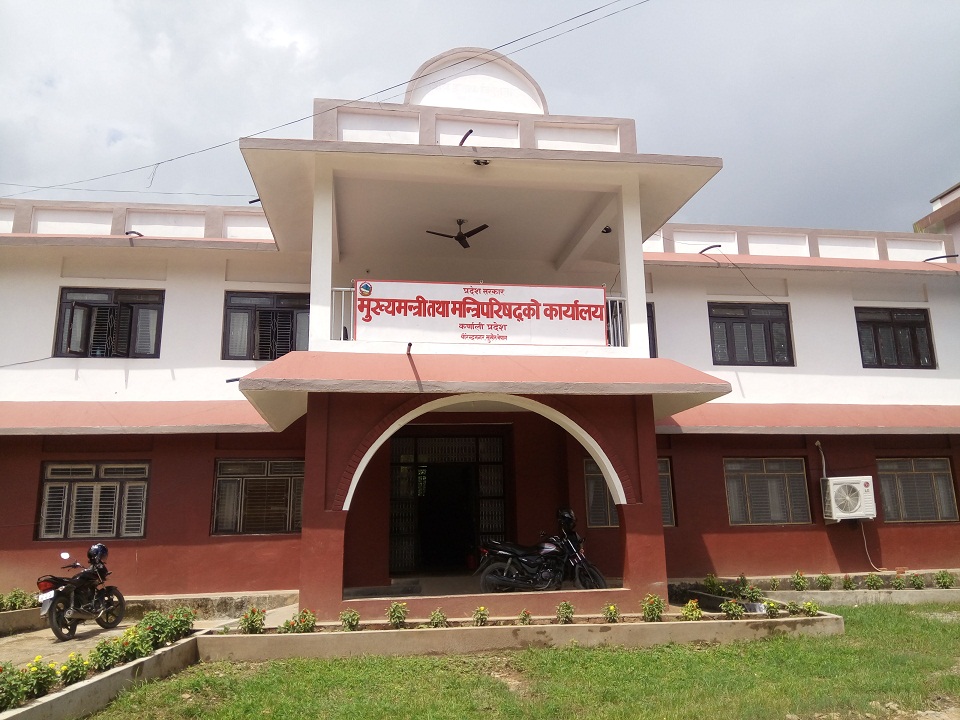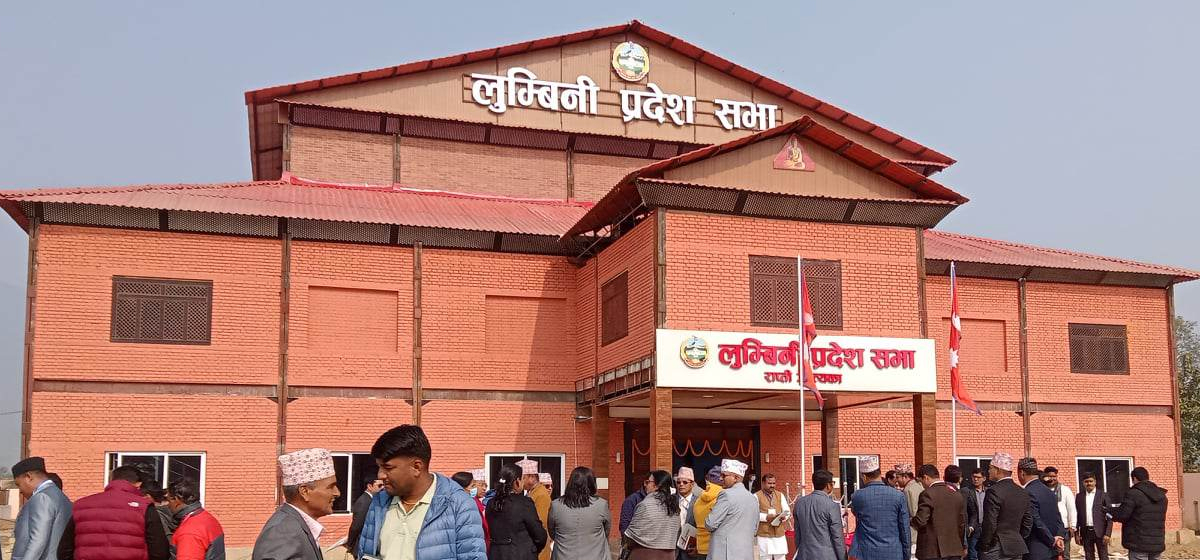
OR
Youth entrepreneurs learn brick technology from YouTube, Google
Published On: October 15, 2017 05:00 AM NPT
BANEPA, Oct 15: Nishan Chandi Shrestha and his two friends who were searching for job after completing their MBA have now become entrepreneurs based on their learning from 2015 earthquake. While volunteering to help the earthquake survivors, they found out that there was scarcity of bricks for reconstruction. That gave them an idea to look for an alternative to the traditional red brick.
On the one hand there was a huge demand of brick and on the other, many brick kiln was destructed by the earthquake. They started surfing Google and YouTube in search of an alternative to brick.
Nishan Chandi Shrestha with his friends Sachit Pandit and Subhash Shrestha, along with Vivek Adhikari a mechanical engineer from Ilam, stumbled upon the idea to use compressed interlocking earth block.
“We have found that this technology has been used to build buildings in Southeastern Asia after Tsunami,” Nishan said: “We got encouraged after knowing that Nepali engineers had used this technology at Asian Institute of Technology, Thailand."
Then they thought of producing such earth blocks. They raised Rs 500,000 from each member and took loan from different finance companies to meet their capital requirement. They bought the required machine from Eco Cell Industries Pvt Ltd. But the machine remained stranded at Kolkata port for three months due to Indian blockade toward the end of 2015.
After spending Rs 400,000 they were able to bring the machine into the country. Then they were faced with another issue -- there could not afford to keep workers to run the machine.
"We could not afford to keep workers, so four of us worked day and night. Most of the time we used to sleep turn-wise inside the factory," Nishan told Republica.
Initially, it was difficult to give an exact shape to the brick. The bricks they made using mud, sand and cement could not pass the lab test. “
"We were not trained and had started our business after looking up some videos in YouTube," he said. Then they did some Google searching to find companies that gave training for this business.“
"We found two companies, one American company Dual Earth and another Indian company, Auroville Earth Institute," he added: "The American company was expensive and we could not afford that. The Indian company would charge Rs 60,000 per head for a 15-day training. Then I went there and completed the practical training of 15 days. I stayed at a friend's hostel to save money."
During the training, Nishan realized their mistake of selecting inappropriate mud for brick. Upon returning home, he worked with the team to rectify their mistake. They went to many places looking for the right kind of mud. Now they bring mud from Chapagaun, Sankhu and Melamchi areas, which is helping them to produce good quality bricks. These days, they are laboring hard to increase production as their brick has found a market and the demand is rising.“
"People are still using traditional red bricks, but we have many clients who look for our bricks. They have realized its quality," Nishan said expressing his satisfaction toward their effort. "With increasing demand, our clients have to place their orders at least one month in advance."
The team gets their bricks tested at Central Material Testing Laboratory of Pulchowk Engineering Campus, Lalitpur, for compression strength.
"Though the government has said that the bricks should meet the 3 Mega Pascal (MPa) criteria, our bricks were of 6.82 MPa while the dimensions of bricks are also equal that gives the guarantee of quality," Nishan said.
Such bricks are environment-friendly, Nishan added.
In the beginning they used to produce 500 bricks a day. But now their capacity has increased by four times.
With the demand increasing, they are planning to expand their business by importing more machinery. The team has now employed six people to help them in their small factory.
Initially, they had to face loss for almost one and half years. Even the banks did not trust them for loan“
"After many attempts, Kumari Bank gave us a loan of Rs 2 million, after studying our project. It helped us a lot to expand our business," Nishan told Republica.
"Earlier no one trusted us saying that we were inexperienced but now we have expanded our business to districts such as Dolakha, Kathmandu, Sindhupalchowk and Mustang. We are giving training to many interested people," Nishan said: "In the lack of 3-phase electricity transmission line in villages, we have to use manual machine to produce bricks."
You May Like This

Brick kiln entrepreneurs agree to imply modern technology
LALITPUR, Feb 17: Brick kiln entrepreneurs in the South Asian region agreed to operate industries based on a modern and... Read More...

First Science, Information and Technology National Youth Conference from June 18
KATHMANDU, May 18: The 1st Science, Information and Technology National Youth Conference-2018 is taking place in the Capital from June... Read More...




Just In
- NEPSE loses 3.24 points, while daily turnover inclines to Rs 2.36 billion
- Pak Embassy awards scholarships to 180 Nepali students
- President Paudel approves mobilization of army personnel for by-elections security
- Bhajang and Ilam by-elections: 69 polling stations classified as ‘highly sensitive’
- Karnali CM Kandel secures vote of confidence
- National Youth Scientists Conference to be organized in Surkhet
- Rautahat traders call for extended night market hours amid summer heat
- Resignation of JSP minister rejected in Lumbini province















Leave A Comment